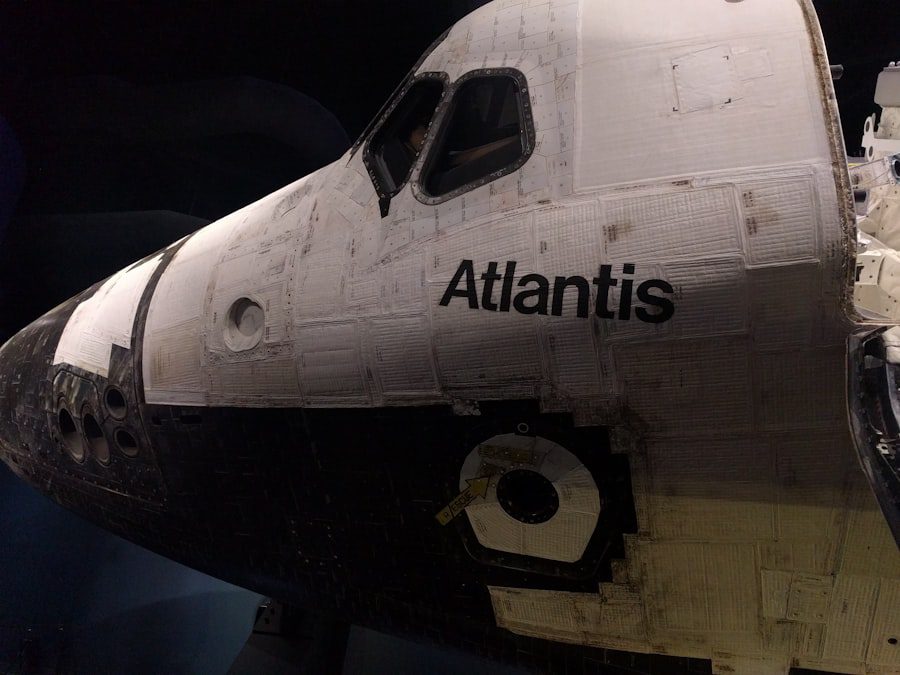Some of the links in this post are affiliate links. This means if you click on the link and purchase the item, I will receive an affiliate commission at no extra cost to you. All opinions remain my own.
Space museums serve as vital institutions that bridge the gap between the public and the vast, often enigmatic realm of space exploration. These museums are not merely repositories of artifacts; they are dynamic spaces where history, science, and technology converge to inspire curiosity and wonder about the universe. They offer visitors a chance to engage with the stories of human ingenuity, the challenges of space travel, and the ongoing quest to understand our place in the cosmos.
Through interactive exhibits, educational programs, and immersive experiences, space museums play a crucial role in fostering a deeper appreciation for the scientific achievements that have propelled humanity beyond our planet. The significance of space museums extends beyond mere education; they serve as cultural landmarks that reflect society’s aspirations and fears regarding space exploration. As humanity stands on the brink of new frontiers—such as Mars colonization and asteroid mining—these institutions provide a historical context that enriches our understanding of current endeavors.
They also highlight the collaborative nature of space exploration, showcasing contributions from various nations and cultures. By examining the artifacts and narratives presented in these museums, visitors can grasp the complexities of space missions and the collective human spirit that drives us to explore the unknown.
Key Takeaways
- Space museums offer a unique opportunity to learn about the history and future of space exploration.
- The Smithsonian National Air and Space Museum is home to the largest collection of historic aircraft and spacecraft in the world.
- The Kennedy Space Center Visitor Complex provides an up-close look at NASA’s spaceport and the opportunity to meet astronauts.
- Space Center Houston offers interactive exhibits and behind-the-scenes tours of NASA’s Johnson Space Center.
- The U.S. Space and Rocket Center in Alabama features the world’s largest collection of rockets and space memorabilia.
- The Intrepid Sea, Air & Space Museum in New York City showcases the aircraft carrier Intrepid and the space shuttle Enterprise.
- The California Science Center in Los Angeles is home to the Space Shuttle Endeavour and offers hands-on exhibits for all ages.
- Space museums continue to inspire and educate visitors about the wonders of space exploration and the possibilities for the future.
Smithsonian National Air and Space Museum
The Smithsonian National Air and Space Museum, located in Washington, D.C., is one of the most visited museums in the world, attracting millions of visitors each year. It houses an extensive collection of artifacts that chronicle the history of aviation and space exploration. Among its most iconic exhibits is the Apollo 11 Command Module, which carried astronauts Neil Armstrong, Buzz Aldrin, and Michael Collins to the Moon in 1969.
This artifact not only represents a monumental achievement in human history but also serves as a tangible connection to the dreams and aspirations of a generation that witnessed humanity’s first steps on another celestial body. In addition to its impressive collection, the museum offers a variety of educational programs and events designed to engage visitors of all ages. The planetarium shows, for instance, provide an immersive experience that transports audiences through the cosmos, exploring celestial phenomena and the latest discoveries in astronomy.
The museum also hosts lectures and workshops featuring prominent scientists and engineers who share their insights into current research and future missions. This commitment to education ensures that visitors leave with a deeper understanding of both the historical context and future possibilities of space exploration.
Kennedy Space Center Visitor Complex

The Kennedy Space Center Visitor Complex in Florida is another premier destination for those interested in space exploration. Situated adjacent to NASA’s launch facilities, this complex offers an unparalleled opportunity to witness the legacy of American spaceflight firsthand. Visitors can explore the Space Shuttle Atlantis exhibit, which showcases the shuttle’s remarkable 33 missions and includes interactive displays that allow guests to experience what it was like to be an astronaut.
The exhibit’s centerpiece is the Atlantis orbiter itself, suspended in a dramatic display that captures its dynamic re-entry into Earth’s atmosphere. One of the most compelling aspects of the Kennedy Space Center is its emphasis on real-time space exploration. The complex features live launch events, allowing visitors to witness rocket launches as they happen.
This connection to ongoing missions fosters a sense of excitement and immediacy, reminding guests that space exploration is not just a thing of the past but an active endeavor shaping our future. Additionally, the center offers behind-the-scenes tours that provide insights into NASA’s operations, including rocket assembly and astronaut training facilities. These experiences create a unique blend of education and inspiration, encouraging visitors to dream big about their own potential contributions to space exploration.
Space Center Houston
| Metrics | Data |
|---|---|
| Visitors per year | Over 1 million |
| Exhibits | Over 400 space artifacts |
| Size | Over 250,000 square feet |
| Interactive experiences | Over 200 |
Space Center Houston serves as the official visitor center for NASA’s Johnson Space Center in Texas. This facility provides an in-depth look at human spaceflight and the training processes that astronauts undergo before embarking on their missions. One of its standout attractions is the Saturn V rocket, which is displayed in its entirety—an awe-inspiring sight that showcases the engineering marvels behind lunar missions.
The center also features interactive exhibits that allow visitors to simulate various aspects of space travel, from piloting a spacecraft to experiencing microgravity conditions. In addition to its impressive exhibits, Space Center Houston places a strong emphasis on education through its STEM (Science, Technology, Engineering, and Mathematics) programs. These initiatives aim to inspire young minds by providing hands-on learning experiences related to space science and engineering.
Workshops, camps, and educational outreach programs are designed to engage students in meaningful ways, fostering a new generation of innovators who may one day contribute to humanity’s exploration of space. The center’s commitment to education ensures that it remains a vital resource for schools and families seeking to ignite interest in science and technology.
Located in Huntsville, Alabama, the U.S. Space and Rocket Center is dedicated to preserving and showcasing America’s rich history in space exploration. The center is home to an extensive collection of rockets and spacecraft, including the massive Saturn V rocket that played a pivotal role in NASA’s Apollo program.
Visitors can explore various exhibits that detail the evolution of rocket technology and its impact on both military and civilian applications. The center also features simulators that allow guests to experience what it feels like to launch into space or navigate through zero gravity. The U.S.
Space and Rocket Center also plays a crucial role in education through its Space Camp program, which has inspired countless young people since its inception in 1982. This immersive experience allows participants to engage in hands-on activities related to space science, engineering challenges, and teamwork exercises designed to mimic real astronaut training. By fostering a passion for STEM fields among youth, the center contributes significantly to cultivating future leaders in aerospace and related industries.
The combination of historical artifacts and educational initiatives makes this center a cornerstone for understanding America’s contributions to space exploration.
Intrepid Sea, Air & Space Museum
The Intrepid Sea, Air & Space Museum in New York City offers a unique perspective on maritime history intertwined with aviation and space exploration. Housed on an aircraft carrier that served during World War II, this museum features an impressive collection of aircraft as well as the Space Shuttle Enterprise. The Enterprise was NASA’s prototype shuttle used for testing atmospheric flight capabilities before actual missions began with operational shuttles.
Its presence at the museum allows visitors to appreciate not only its design but also its significance in paving the way for future shuttle missions. The Intrepid Museum also emphasizes interactive learning experiences through its various exhibits and programs. Visitors can participate in flight simulators or explore immersive displays that highlight significant moments in aviation history.
The museum’s commitment to education extends beyond its walls; it offers outreach programs aimed at schools across New York City, ensuring that students have access to engaging content related to science and technology. By integrating maritime history with aerospace achievements, the Intrepid Museum provides a multifaceted view of human innovation while inspiring future generations.
California Science Center

The California Science Center in Los Angeles is another prominent institution dedicated to promoting science education through engaging exhibits related to space exploration. One of its most notable attractions is the Endeavour Space Shuttle, which is displayed in a dramatic vertical position as if it were launching into orbit. This exhibit allows visitors to get up close to one of NASA’s most iconic spacecraft while learning about its missions and technological advancements.
In addition to showcasing artifacts from NASA’s shuttle program, the California Science Center offers a variety of interactive exhibits that cover topics ranging from robotics to environmental science. The center’s emphasis on hands-on learning encourages visitors to explore scientific concepts through experimentation and inquiry-based activities. Educational programs are tailored for different age groups, ensuring that children and adults alike can engage with complex scientific ideas in accessible ways.
By fostering curiosity about science and technology, the California Science Center plays an essential role in inspiring future innovators who will continue humanity’s journey into space.
The Future of Space Exploration in Museums
As we look toward the future of space exploration, museums dedicated to this field will continue to evolve alongside advancements in technology and our understanding of the universe. These institutions will play an increasingly important role in educating the public about new discoveries while fostering interest in STEM fields among young people. With ongoing missions planned for Mars exploration, lunar bases, and even potential asteroid mining ventures on the horizon, space museums will serve as critical platforms for sharing knowledge about these ambitious endeavors.
Moreover, as private companies enter the realm of space travel—such as SpaceX and Blue Origin—museums will have opportunities to showcase innovations from both governmental agencies and commercial enterprises alike. This collaboration will enrich narratives surrounding space exploration by highlighting diverse contributions from various sectors. As we continue our quest for knowledge beyond Earth’s atmosphere, space museums will remain essential beacons of inspiration, inviting all who enter their doors to dream about what lies beyond our planet’s horizon.






